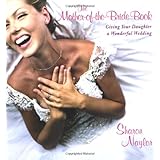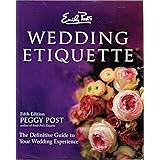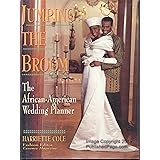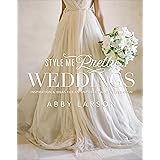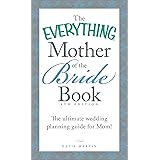Mastering the complexities of a full wedding day demands more than just technical skill; it requires an intricate blend of strategic planning, empathetic client interaction, and an adaptable workflow. The accompanying video offers a compelling, behind-the-scenes look at a professional wedding photographer navigating a high-volume weekend, packed with unique challenges and invaluable insights. From the initial getting-ready moments to the final reception details, every segment of the day presents an opportunity to capture breathtaking memories while optimizing efficiency and service delivery, particularly within the burgeoning field of hybrid photo-video coverage.
This deep dive into a comprehensive wedding photography workflow illuminates the nuanced decisions made by an expert, revealing how seemingly small choices can dramatically impact the final gallery and client experience. It’s not merely about pointing and shooting; it’s about anticipating moments, understanding light, and creating an environment where couples feel comfortable enough to truly be themselves. By dissecting the methodologies presented in the video, wedding professionals can refine their own practices, ensuring they not only meet but exceed the expectations of their discerning clientele.
The Hybrid Advantage: Elevating Your Wedding Business with Photo and Video
The landscape of wedding content creation is rapidly evolving, with a growing demand for a unified visual narrative that encompasses both still photography and dynamic videography. This isn’t just a trend; it’s a significant shift that presents substantial business growth opportunities for savvy professionals. As highlighted in the video, integrating hybrid photo-video services into your offering can lead to remarkable increases in revenue, with some photographers reporting an additional $100,000 to $300,000 to their bottom line after adopting these services. This financial boon underscores the tangible value couples place on having both mediums seamlessly captured by a cohesive team or even a single skilled individual.
The speaker, a veteran with over 1,000 weddings under his belt, frequently operates as a one-photographer studio, even in the luxury space, attesting to the efficiency and demand for this integrated approach. Couples are increasingly seeking a singular creative vision that extends across all their wedding day memories, from the emotional depth of a still photograph to the immersive storytelling of a highlight film. This convergence means photographers who can confidently offer both are uniquely positioned to capture a larger share of the market, offering a more complete and compelling package that resonates deeply with modern couples. Furthermore, the video briefly touches on an interesting phenomenon where photographers are occasionally hired “video first,” demonstrating the fluid expectations and diverse needs within the market.
Strategic Lens Selection for Intimate & Dynamic Wedding Shots
Just as a painter selects brushes for specific strokes, a wedding photographer meticulously chooses lenses to sculpt light and perspective throughout the day. The 35mm F1.4 GM, a consistent companion for the speaker, epitomizes versatility and intimacy. This lens excels in environments like getting-ready rooms, where space can be constrained and a more reportage style is desired, allowing the photographer to remain physically close to subjects without feeling intrusive. The wide aperture of F1.4 is a game-changer, not only for its superb low-light performance but primarily for its ability to melt away distracting backgrounds into a creamy, ethereal bokeh. This creative control is akin to isolating a single instrument in an orchestra, allowing the viewer’s focus to land squarely on the subject without visual clutter.
Contrast this with the utility of a zoom lens like the Tamron 35-150mm, which acts as a photographic Swiss Army knife, adapting swiftly to varied scenarios from expansive first looks to ceremony wide shots. While the 35mm offers a consistent, personal perspective, the 35-150mm provides the flexibility to capture both intimate moments and broader scenes without constantly swapping lenses, making it an invaluable tool for dynamic coverage. The choice between primes and zooms often boils down to a balance between artistic consistency and practical adaptability, yet both play crucial roles in crafting a diverse and compelling wedding narrative. The video also mentions the 24-70mm lens, often paired with a second shooter for broader coverage, providing a comprehensive lens strategy that covers all bases.
Mastering the Art of Candid Capture and Client Comfort
Creating an atmosphere where couples and their guests feel genuinely at ease is paramount for capturing authentic, candid moments that truly reflect the day’s emotion. The speaker’s preference for a smaller 35mm lens, especially during intimate moments like getting ready, directly contributes to this comfort. A large lens can often feel like a formidable weapon, transforming a relaxed interaction into a formal photoshoot, evoking “fake smiles” and self-consciousness, as if the wedding were a reality TV production. A more compact setup subtly communicates a less intrusive presence, inviting subjects to open up more quickly and naturally.
Furthermore, the shift from viewfinder-centric shooting to relying on the camera’s screen is a powerful technique for fostering connection. By maintaining eye contact and engaging in conversation while discreetly composing and capturing images, photographers can become a part of the moment rather than an observer peering through a lens. This approach mirrors the organic feel of film photography, where the deliberate process often yields a more genuine response from subjects. It allows for continuous candid capture, transforming formal poses into fluid interactions and enabling the photographer to capture the true essence of the day without making every shot feel like a staged production.
Navigating Challenging Locations and Lighting Conditions
Wedding days rarely unfold in perfectly curated studios; they often lead photographers to diverse and challenging environments, from sun-drenched fields to dimly lit forests. The video’s journey to a waterfall for a first look exemplifies such a scenario, highlighting the critical need for advanced planning and on-the-fly adaptation. While Ontario might humorously claim to be the “waterfall capital,” these picturesque spots often come with logistical hurdles. Securing the necessary permits is a non-negotiable step; assuming public access can lead to interruptions or even fines, creating an awkward energy that disrupts the romantic flow of the day. The speaker’s experience with a single permit issue out of over 1,000 weddings, including 200 in Toronto, underscores the importance of this due diligence, even if issues are rare.
Beyond permits, lighting in such natural settings presents its own set of challenges. Forest interiors, even during daytime, can be surprisingly dark and cast an unflattering green tint on skin tones due to ambient light bouncing off foliage. The strategic solution involves positioning subjects near the edge of the forest, where clean, open light can illuminate them, using the dappled forest as a beautiful, soft backdrop. This approach is superior to attempting extensive color correction in post-production. Similarly, during ceremonies, dealing with harsh, direct sunlight in an open field can be mitigated by utilizing any available shade or, failing that, anticipating fleeting cloud cover. The speaker humorously notes that often, a crucial three-minute window of ideal overcast light aligns perfectly with key moments like the first kiss, a testament to both luck and preparedness.
Precision Autofocus and Ceremony Coverage: Capturing the Vows
The ceremony is the emotional core of the wedding day, demanding unwavering focus and technical precision. For photographers utilizing advanced mirrorless systems like the Sony A9 Mark III, mastering autofocus strategies is paramount. The speaker’s technique of using full wide autofocus points, then zooming in to acquire focus on the intended subject (typically the person centrally composed), and then zooming back out for the shot, showcases an intelligent workaround for ensuring pinpoint accuracy. This method, coupled with the camera’s eye autofocus, significantly reduces the margin for error, especially when subjects are in motion or surrounded by others.
Conversely, Nikon users benefit from features like customizable eye autofocus boxes, allowing photographers to define specific areas within the frame for eye detection, alongside robust 3D tracking capabilities. These tools empower photographers to lock onto subjects and maintain focus even through complex movements. Positioning is another critical consideration; while a direct center-aisle shot provides a classic perspective, utilizing a zoom lens from behind the officiant can offer a unique, unobtrusive angle that captures both the couple’s expressions and the officiant’s role. The capture of the “breaking of the glass” moment, a cultural highlight, further illustrates the importance of high frame rates for securing the perfect shot, even if the extreme 120 frames per second on the A9 Mark III remains a feature primarily for specialized use rather than routine wedding coverage.
Beyond the Traditional: Unique Wedding Day Elements and Team Workflow
Modern weddings are increasingly personalized, often featuring unique elements that require adaptable photographic approaches. The integration of a private vow reading and exchange before the main ceremony, observed in approximately 50% of the speaker’s first looks, allows for a more intimate and extended expression of commitment, complementing the public ceremony. This requires careful consideration of the day’s timeline and location to create a private, emotive space for the couple.
Furthermore, special requests like photographing pets or elaborate setups demand foresight and flexibility. Capturing four cats on leashes, for instance, is not a quick endeavor; the speaker advises allocating a generous 20-25 minutes for such a task, accounting for carrier transitions, leashing, and patiently coaxing good photos. Similarly, elements like an aerial hoop add a creative, challenging dimension. During these unique segments, efficient team workflow becomes essential. While the primary photographer focuses on the couple and specific creative shots, the second photographer or videographer typically transitions to capture cocktail hour candids and meticulously document reception details before guests arrive. This division of labor ensures comprehensive coverage, a well-rounded final gallery, and an exceptional overall wedding photography workflow.


